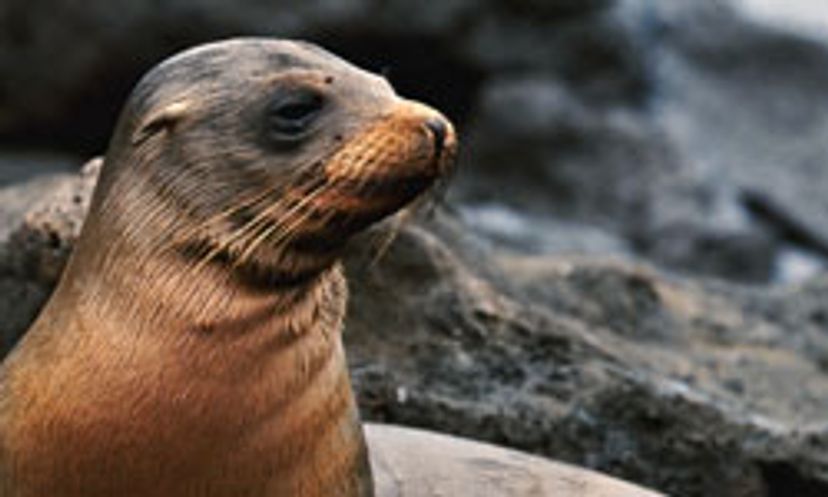
Seals are found in all oceans, but are most abundant in the Arctic and Antarctic waters. Seals make up the pinniped animal group.
The largest adult seals weigh over 8,000 pounds. However, some adult seals only grow to 130 pounds. Adult seals range in length from 4.5 feet to 20 feet (1.5 to 6 meters).
Californian sea lions are one of the best-known seal species, since they are usually the species found in zoos and are often trained to perform tricks.
Advertisement
Oil from seal blubber is mostly used for soap. Seal fur is used as a fashion item and seal flesh is sometimes used as fertilizer and animal feed.
Seals are categorized into those with ears and those without ears. All seals have internal ears, but earless seals do not have protruding earflaps.
Warm-blooded creatures have body mechanisms that allow them to control their body temperature, keeping their temperature at a constant regardless of the outside temperature. Seal blubber acts as an insulator against the cold and the circulatory system of earless seals restricts blood flow to the skin, helping them to reduce the amount of heat lost from the skin.
Advertisement
Seals do not have tear ducts, so tears are constantly running out of their eyes. Seals have thick, spherical eye lenses that allow them to see well under water.
Most seals can dive between 160 and 600 feet (49 and 183 meters), although elephant seals can dive more than 5,000 feet (1,524 meters) deep!
All eared seals are polygamous and, except for the gray and elephant seals, earless seals are monogamous. Male eared seals attempt to gather a harem, which ranges in size from three to 40 females. The size of the harem depends on the species and strength of the bull.
Advertisement
Harbor seals have acquired their name from their tendency to stay close to home, which is usually the harbor. Harbor seals live mainly along shorelines and are found on both the east and west coasts of the U.S.
Harbor seal pups can swim when they are just a few minutes old. However, their mother will accompany them around the harbor until the pups are a bit older. If the mother senses danger she takes her pup in her mouth and dives with it.
Elephant seals are the biggest pinnipeds and the only pinnipeds that are larger than walruses. Elephant seals are the second largest sea mammals after whales.
Advertisement
Elephant seals are able to dive for over an hour without needing to come up for air. They do this by storing more oxygen in their blood than other kinds of pinnipeds, saving the need to come up for oxygen as frequently.
Harp seal pups are born with a white coat of fur. The pups used to be largely hunted for their soft, white pelts and were given the name whitecoats. A couple of weeks after birth the harp pup's coat turns gray and the pups is now ready to swim.
Ringed seals build an ice house where they give birth and keep their pup warm, snug and safe. They do this by swimming under the ice and finding a cracked section where there are holes. They come up through the hole and use their claws to dig out the ice and snow, hollowing out a place where the mother and her pup will be able to cuddle together.
Advertisement
Baikal seals live in Lake Baikal, a freshwater lake and the deepest lake in the world. The lake is in Siberia and is covered with ice most of the year that can get to three feet thick. Baikals each make their own breathing and haul-out hole and are one of the few seals that may give birth to twins.
Fast ice is attached to land, as opposed to pack ice, which floats on water. Ringed seals prefer to breed on fast ice. However, non-breeding ringed seals prefer pack ice, because the water underneath it contains food which they can hunt for.
There are eight species of southern fur seals and the largest and most numerous is the South African, or cape, fur seal. Southern fur seals are found near Baja, California, South America, South Africa, Australia and Antarctica. The Australian fur seal is protected, because fur seals are commercially hunted.
Advertisement
Fur seals are most active at night and sleep during the middle of the day, floating on their sides.